Make your Trade Show Exhibit a PR Showcase
Every trade show is a public relations opportunity.
Your Trade Show Exhibit plan should be designed to target your target customer markets and the event, but here are a few tips that will help you make a PR impact.
Determine your PR objective
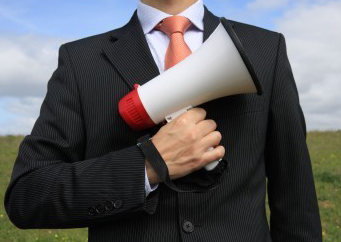 The best PR efforts have a singular, focused objective. Are you trying to increase awareness of your company’s products, services and/or brand? Are you trying to reach new prospects? Do you want to expand your distribution channels and recruit new distributors or dealers? Are you most interested in maintaining a presence and enhancing your company’s visibility?
The best PR efforts have a singular, focused objective. Are you trying to increase awareness of your company’s products, services and/or brand? Are you trying to reach new prospects? Do you want to expand your distribution channels and recruit new distributors or dealers? Are you most interested in maintaining a presence and enhancing your company’s visibility?
What is your news?
If you want press, you need to create a story, you need to have a news hook. Are you introducing a new product or service? Has your company achieved a new milestone?
If you do not have news, looks for ways to create news value. For example, did your company recently complete a new research study about the industry or your products, and can you release some of this information for the first time at the trade show? Can you provide insight into current industry trends?
Build media interest before the show
Look at past events and see how much press coverage exhibitors received. Generally, national and international industry trade shows and conferences get the most coverage. Before the show, contact trade and local reporters who are likely to cover the event. Also, connect with any media representatives who are pre-registered for the show. Your overall goal is to secure media interest in your company, and if possible, schedule interviews during the show.
Work with the event organizers
Most trade show organizers engage in media promotion throughout the year. They are often the best source of information about who will be covering the show.
Put together a press kit
At least a month before the show, put together a press kit. Include information about your company, products and services, performance reports, past articles, key executive bios, and other material that will help reporters feature your company and your products. Include one press contact in your press kit.
Arrange to have your press kit in the media room or delivered to reporters. And, always have a few extra copies in your trade show booth.
Issue a press release from the show.
Make your news the focus of the press release and include a senior executive as the contact from your company.
A carefully planned tradeshow PR strategy can help you attract positive press coverage at your next trade show. It can also make your trade show exhibit investment more productive.
Trade Show Strategy: Plan it Like an Expedition
I like to think about a trade show like an expedition. I’m headed off to some exotic land in search of treasure. I will be deep in the jungle, cut off from civilization for days. It will be hard to get supplies. I know that my team should expect no outside help. The fate of the entire expedition rests in the hands of the people I choose to man the booth, careful planning and how well equipped we are to meet the expected – and unforeseen – challenges.
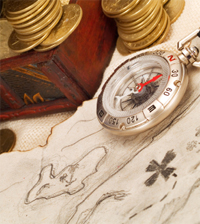
The treasure is, of course, new customers and sales. And getting those new customers requires an action plan.
Plan your targets in advance
About 75% of show attendees plan booth visits and meetings before the show starts. Review the attendee list in advance of the show. ID your targets. Start to invite people to visit your booth a few weeks before the show. Personal phone calls are most effective and harder to ignore than e-mails and mailings. Think about pre-show communications that will create anticipation of your booth – it can feature a special promotion or some buzz about a new product release.
Make sure you and your team are outfitted for this adventure
Select clothes that look professional or that support the theme of your booth, but also make sure that everyone will look great all day. Plan on it being either too hot or too cold – attire with a jacket that can be removed is a great choice. And wear comfortable shoes. (One of the biggest mistakes I ever made was wearing beautiful, brand new shoes that were not a great fit to a trade show.) It is almost impossible to really smile if you have been standing for 6 hours and your feet hurt.
Have enough staff or find a partner
Ideally, you will have enough staff in your booth to meet with prospects and give your team breaks. If you have limited staff or have only one person at the booth for a show, find another larger company to partner with. It is best to do this before you select your booth location so that you can be located next to each other or share a larger space.
Pick the right team
Who you pick for this “expedition” is essential to making it successful. Fill your team with high-energy people who have an upbeat attitude. And make sure that everyone who is representing your company has deep product knowledge.
Plan your sales material carefully
People who attend a show are bombarded with information and the best way to be remembered is from your sales literature. Make sure it is easy to carry and packed with valuable information – your goal is to make sure people take your material back to their office. If you have a really valuable prospect, make sure to get their contact information and send material to them after the show.
Carefully select your bait
Over 90% of exhibitors bring a premium or free sample to give away at a trade show because offering an attractive free gift is great way to attract people to your booth. You will be the best choices and can usually save money if you plan this in advance.
What do you do before a show to make it more successful?
Avoid Being Part of the “Boring Sea of Tradeshow Sameness”
I attend a lot of trade shows – hardware, books, electronics, men’s wear, food service, medical equipment, etc. – if there is a trade show, odds are I’ve probably been to it.  It’s part of my job. Sometimes it is a delightful part of what I do – but all too often I can walk an entire trade show floor and not see one new, inspiring idea.
It’s part of my job. Sometimes it is a delightful part of what I do – but all too often I can walk an entire trade show floor and not see one new, inspiring idea.
So far this year at the shows I have attended, I have found that most booths are professional looking and nicely designed but I often don’t remember anything the minute I move on to the next aisle. The words that come to mind: boring, formulaic, and devoid of any discernable brand personality.
Everything is perfectly planned, so why aren’t you more successful?
You have a great location for the show – right up front, with lots of traffic. You have a beautifully designed booth that is uncluttered and well-merchandised. You have great people who know that a positive attitude is essential. Yet people just keep passing by, and don’t even slow down.
Ask yourself, why should someone stop at your booth?
Think about what it is like to attend this show or conference. After three hours of seminars and speeches, the conference attendees finally get a break. They enter the exhibit hall and are greeted with hundreds of booths and the din of people chattering, music and sales presentations. They quickly walk down the aisles and select a few booths to visit. What can you do to make your booth one of those stops?
Avoid being part of this “boring sea of sameness”?
Do something different and unexpected. Break out of the “just another trade show exhibit” pack. And do it in a way that sells your product and builds your brand. I know it is much easier said than done, but here are a few breakout ideas:
- Entertainment: If it is appropriate to your overall message and product, hire a professional performer to be part of your booth but give it a twist. One small book publisher was promoting a new series of activity books include a book on juggling. They secured two booths located directly across from each other. Then they hired a two-person comedy juggler team who did a juggling show across the aisle. It was hard for anyone who saw this simple spectacle to pass them by without stopping. More importantly, it was hard to forget that the publisher had a juggling book coming out.
- Create a place to “escape” from the show. Provide a place to really relax that gives you a sales opportunity. Many exhibitors provide comfortable seating or have conference tables with chairs for meeting with prospects or set up beverage bars with stools. This just creates a place to relax and avoid a sales message. Often it creates a place for your staff to sit where no one can see them. The breakout idea is to incorporate the escape into the overall sales message. A travel incentive company who promotes South Pacific Getaways created a tropical beach getaway with a couple real palm trees, some fresh exotic flowers, beach chairs and tropical beverages. They added ambient sound with tropical birds and waves and simple lighting effects. The staff was dressed in tropical business attire and was actively engaged in greeting people and answering questions – they were not relaxing at the beach, they were smiling, attentive and working all the time. It was the most popular place at the entire show. Everyone who entered received a “Tourist Guide and Passport” that provided information about the company’s travel incentives.
- Incorporate an interactive demonstration. Make your booth interactive and experiential by turning the sales process into an active, dynamic experience. It doesn’t need to be a technological wonder and it should always involve 1-to-1 interaction between the sales staff and the prospect. Have something unusual for people to do, touch, smell or even taste. Bring your products to life with interactive demonstrations that focus on the key sales proposition. And if you do incorporate technology, make sure that it is not complete “self-service”. A medical technology company used an Interactive 3D display to allow prospects to explore their product, zoom, see internal mechanics, and even go a simulated “test drive”. The 3D simulation provided the company the opportunity to introduce key prospects to a very costly medical device but required some assistance from the booth staff so that there was a natural opportunity to start a dialog.
- Everybody wins. If you are going to have a prize drawing, come up with something more enticing than a fishbowl for the entries and a random drawing sometime in the future when most of the entrants are already left the show. Attendees remember events, games, and competitions. One clever exhibitor created an “everybody wins” contest with thousands of prizes. Instead of being just another booth with a free logoed giveaway, they enticed people into entering their booth and spinning a gigantic wheel of fortune. Even most of the people who won the smallest prize – a promotional item with the company’s name, website, and phone number – remembered the company because they won their prize.
- Open and inviting. The simplest way to increase the effectiveness of your trade show marketing is to open up your booth. Get rid of the table across the front and get rid of any barriers. Eliminate all the clutter. Design your trade show exhibit for graphic impact with large, attractive images and clean, simple and bold elements that will draw one’s attention. Add dramatic lighting and motion that welcomes people into your booth.
Have you seen any unique and enticing booth ideas that created buzz on the exhibition floor and attracted visitors?
Watch Out For End Cap Booth Spaces At Your Next Trade Show
In a grocery store or other retail shops, it is very desirable to have your product placed on an “end cap” (the very end of an aisle). This position provides a great deal more traffic, keeps you from being right next to your competition, and has been proven to increase sales.
Many marketing managers take this experience in retail and put it to use in selecting exhibit space at a trade show, choosing “end cap” spaces, or “peninsula booths” in trade show jargon. This is not always a wise decision. If you look closely at the floor plan of a trade show, you’ll see that the vast majority of these spaces face cross aisles. Most cross aisles are not a great choice for traffic. Attendees typically use cross aisles to get from one main aisle to another, which means they are looking towards their destination and may completely miss your display.
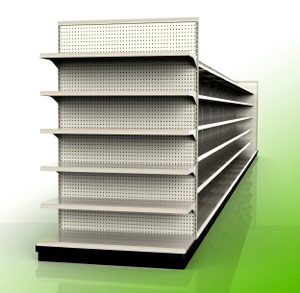 Another consideration is the display restrictions that apply to peninsula booths. Most of these spaces are 20′ x 20′. Standard tradeshow booth space rules provide for a 5′ line of sight area along main aisles. This means that you cannot install displays over waist high within 5 feet of an aisle that is adjacent to another exhibit. In the case of a peninsula booth, you will lose about a quarter of your exhibit space because of this restriction. This needs to be considered as you design your booth and may mean that you will be unable to use some or all of your existing display.
Another consideration is the display restrictions that apply to peninsula booths. Most of these spaces are 20′ x 20′. Standard tradeshow booth space rules provide for a 5′ line of sight area along main aisles. This means that you cannot install displays over waist high within 5 feet of an aisle that is adjacent to another exhibit. In the case of a peninsula booth, you will lose about a quarter of your exhibit space because of this restriction. This needs to be considered as you design your booth and may mean that you will be unable to use some or all of your existing display.
The best thing to do is to carefully review the tradeshow rules before selecting an exhibit space. In my experience, you should select a space based on where you think you’ll get the most traffic, and while it might, the end cap doesn’t always come out on top.
Tradeshow Exhibit Packaging 101
Tradeshow exhibits can be packaged in a variety of ways including:
- Crates
- Skids or pallets
- Molded plastic cases
- Or no packaging at all, (pad wrapped)
Crates
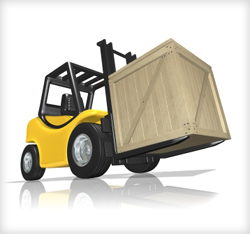 The vast majority of custom or modular trade show exhibits are packed in crates. Properly constructed crates reduce the likelihood of damage and can greatly enhance the useful life of the display. The downside of crates is the cost (usually around $1,500 each for average sizes) and the weight of the crates (around 300 pounds each). While properly designed crates will take full advantage of the space in a truck, their weight will add cost to shipping (if based on weight) and material handling. Crated displays can usually avoid the “special handling” fees charged for material handling.
The vast majority of custom or modular trade show exhibits are packed in crates. Properly constructed crates reduce the likelihood of damage and can greatly enhance the useful life of the display. The downside of crates is the cost (usually around $1,500 each for average sizes) and the weight of the crates (around 300 pounds each). While properly designed crates will take full advantage of the space in a truck, their weight will add cost to shipping (if based on weight) and material handling. Crated displays can usually avoid the “special handling” fees charged for material handling.
Skids or Pallets
Skids are essentially crates without sides or a top. They are easily moved with a forklift and are commonly used when the items are too big or bulky to fit in a crate, e.g., structural beams, truss, furniture and rolls of carpet and padding. The disadvantages to skids are that they are difficult or impossible to stack, increasing storage and shipping costs, and they do not afford the protection that crates do. Skids do reduce shipping weight when compared to crates.
Molded Cases
Manufactured exhibit systems and portable displays often pack in molded plastic cases. In some instances, the cases are compartmentalized to secure the individual parts of the display. Manufactured displays break down into smaller pieces that lend themselves to being packed into these pre-engineered containers. They are much lighter than crates and are very durable. Some displays that are packed in multiple molded cases are then stacked on skids for ease of handling on the show floor.
Pad Wrapped
Some exhibits are shipped as individual pieces without crates or skids. The items are wrapped with packing pads and loaded into moving vans just like household goods are handled. This process adds considerable time to the packing, loading and unloading process and increases the likelihood of damage, but might be worth considering in some cases.
Trade show display packaging is not as simple as it might seem, as there are many variables involved in deciding which method will be most cost-effective. Your exhibit supplier should be able to describe how your exhibit is going to be packaged and why. A detailed cost comparison of each option, accounting for all potential areas of impact on cost, might be of value before you make a decision.
How to Make Exhibits Eco-Friendly
According to the Environmental Protection Agency (EPA), trade shows are the #2 producer of waste in the U.S., following the construction industry, a dubious honor indeed. So what can you do as an exhibitor to be more environmentally responsible? Though it would be difficult, if not impossible, to have a tradeshow exhibit that’s is 100% sustainable, the goal of many companies is to move more in the “green” direction. Doing so might not be as difficult as it once was as many exhibit companies are now offering more and more sustainable exhibits.
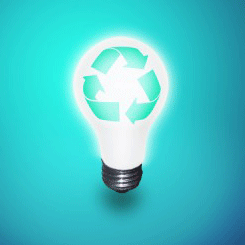 What makes it eco-friendly? Good question. Let’s take a look at some of the options for companies wanting to create eco-friendly exhibits.
What makes it eco-friendly? Good question. Let’s take a look at some of the options for companies wanting to create eco-friendly exhibits.
One way to reduce waste is to choose exhibits made from materials that are eco-friendly, meaning they are made of renewable, recycled and sustainable materials. The frames of exhibit systems can be made out of aluminum, which is 100% recyclable. Substrates, panels, banner stands can be constructed out of other recyclable materials, such as Sorghum, bamboo, PET plastic, cardboard, and biodegradable foam board.
Another huge energy waster is lighting. Choose LED lighting instead, which reduces energy usage by 90%. Exhibitors can even go green on the printing on displays by using low Volatile Organic Compound (VOC) inks and eco materials.
Lest we forget shipping, many exhibit companies are offering shipping cases that are made entirely of recycled plastic so the entire case can be recycled. These are also often very lightweight, again reducing the amount of energy, or carbon footprint, associating with shipping it.
Tradeshow Display Lighting – Is LED the Way to go?
Trade Show Display Lighting Can Make Your Booth Stand Out From The Competition
The explosion of LED lamps and fixtures onto the trade show display scene has changed the face of lighting going forward. Ten years ago, lighting companies’ could not produce enough lumens from an led, whereas today, certain types of LED lamps and fixtures rival traditional incandescent in light output. Although this might be a reason to consider using led over traditional lamps, and, aside from their “green” technology for the “sustainable” people out there, there are just as many cons to consider.
 If you don’t pack extra LED lamps and fixtures in your set-up kit, it might be very hard to replace them if something breaks. Sure, a local contractor or hardware store might have something similar, but with all of the product lines, and the variety of manufacturers out there, getting an exact match will be tough on the fly.
If you don’t pack extra LED lamps and fixtures in your set-up kit, it might be very hard to replace them if something breaks. Sure, a local contractor or hardware store might have something similar, but with all of the product lines, and the variety of manufacturers out there, getting an exact match will be tough on the fly.
Advice: Pack an extra box of lamps, and a spare fixture if using LED.
It’s amazing the reduction in energy consumed by LED over traditional incandescent or arc lamps. Couple this with the promise of “long Life” and you have what would seem to be an environmentally friendly “green dream” come true. Beware, all that glitters is not green. Or rather, all that is green does not glitter, at least not for long. What’s this? Well, certain 100,000-hour lamps have a tremendous amount of light degradation over the life of the lamp. What “popped” and rendered beautiful color new, will fade and dim over time. So even though it may last 100,000 hours, you will certainly not want to use it after 40,000 as the lumens emitted fall, and the color rendering degrades dramatically.
Advice: Do a little homework, and don’t buy the cheapest lamps.
There are many uses for LED lamps in a booth, however, understand, throw distances are still limited versus traditional spot or flood lamps. If you are lighting a jewelry case, or smaller product from a close distance, LED may work just fine to add that extra “pop”. However, attempting to get a full wall wash or focus a spotlight from a distance will be tough if you try to wing it with LED. Understand the throw distance for a particular lamp before you specify it in a booth. Throw distance is the distance from the face of the lamp, to the item you are attempting to light. Also taken into consideration, should be the width of the lighting pattern, and light lost over the throw distance.
Advice: Don’t just use LED thinking it is the panacea for all things green, understand what you are trying to light, and the impact LED may, or may not have.
Do Tradeshow Logistical Costs Influence the Decision to Exhibit?
In difficult economic times, companies look closely at every expense.
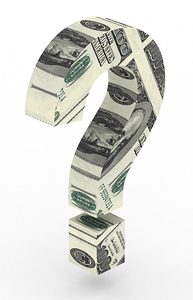 When money is tight, they must decide whether it is still wise to allocate resources to areas that may have been a “no-brainer” in stronger markets. Naturally, marketing expenses are no exception, and trade show exhibiting can be a large portion of many companies’ marketing budgets. The cost of logistics for tradeshow exhibiting (freight, drayage, setup, electrical, etc.) can be substantial. As a result, it will almost certainly be a candidate for the chopping block when executives start cutting back.
When money is tight, they must decide whether it is still wise to allocate resources to areas that may have been a “no-brainer” in stronger markets. Naturally, marketing expenses are no exception, and trade show exhibiting can be a large portion of many companies’ marketing budgets. The cost of logistics for tradeshow exhibiting (freight, drayage, setup, electrical, etc.) can be substantial. As a result, it will almost certainly be a candidate for the chopping block when executives start cutting back.
However, the decision to exhibit in a show is seldom based entirely on logistical costs. As long as advertised attendance figures are favorable, and the following items are true of a show, a company will find the funds to exhibit.
- The company has something to show it’s customers, both current and potential.
- Their competitors will be attending.
- Their biggest customers will be attending.
They may scale back their exhibit space, look at alternative ways to make a presence, or just complain about having to spend the money, but one way or another, they’ll be there. It’s a difficult reality, but in business, perception is important. When a company doesn’t attend a major show, the first thing attendees think is that they must be either in dire straits financially, or that they had nothing to show, and therefore are not worth considering as a vendor. Companies must carefully consider all the potential areas of impact before deciding not to attend a show.
Looking for areas to trim your tradeshow exhibiting budget? Let’s Talk.
Tips for Designing Effective Exhibit Graphics
Exhibit design is a powerful reflection of your brand and, in fact, part of your branding. Trade show booths involve your company logo, products and employees. They serve as giant, interactive business cards.
So, even if you’re not making a huge investment in exhibit design, it’s worth revisiting the core elements of your branding to make sure all the pieces of the puzzle fit together. Here, we’ll take a quick look at graphically and lyrically spicing up your exhibit booths.
Trade Show Graphic Design
A competent exhibit company should be able to provide you with exhibit designs that effectively communicate your brand. You may even wish to incorporate into this process your in-house or consulting graphic designer.
- Embrace your three-dimensionality. Most of your branding materials are probably flat, “conventional” pieces. Graphic designers jump at the opportunity to work with exhibit designers to breathe fresh life into larger, 3D displays.
- Maintain focus. While it’s tempting to incorporate every bell and whistle within your budget, visitors will lose interest quickly if they can’t figure out what’s going on. Speak to your specific offerings and value-added features relatively early in the engagement process.
- Consistent with the 3D theme, reach out and grab your audience’s attention. You’re not only trying to engage people at your booth but those down the aisle and across the room.
Trade Show Custom Copy
 A bit more innovation is possible with your written materials than with your brand graphics. While you can’t and shouldn’t change your logo for every trade show, show-specific copy is an excellent idea.
A bit more innovation is possible with your written materials than with your brand graphics. While you can’t and shouldn’t change your logo for every trade show, show-specific copy is an excellent idea.
Written materials can be customized–partially, at least–for each trade show you participate in. Keep everything as short and concise as possible. Making sure that the information is timely will help you to stand out from the crowd, especially if your competitors’ materials have gone stale. Engage your customers and support your sales and marketing strategies with a custom trade show booth.
Is Your Trade Show Exhibit a Good Investment?
Many marketing executives can’t completely answer this question. They essentially repeat what was done in previous years with slight variations in execution. Taking a moment to analyze your trade show goals and results can help you find new ways to acquire more customers and make your trade show investment really pay off.
Trade shows are expensive, but they can also be one of the best sales and marketing investments your company makes. Trade show exhibits provide unparalleled opportunities to forge stronger customer relationships, win-back old customers and acquire new, high-value customers. But you should expect this effort to deliver more.
Maximizing your Trade Show Exhibit investment
- Incremental sales and profits
Track your results and determine your Trade Show ROI. More information about how to calculate your Trade Show ROI. If your trade show ROI is not acceptable, then look for ways to make improvements. First, look for gaps in sales and customer tracking to ensure that the data is accurate and complete. Next, make sure that the shows selected were good choices and had significant attendance from your target customers.
If your trade show ROI is not acceptable, then look for ways to make improvements. First, look for gaps in sales and customer tracking to ensure that the data is accurate and complete. Next, make sure that the shows selected were good choices and had significant attendance from your target customers.
Then look for marketing gaps: ineffective or no lead follow-up, insufficient planning, staffing issues or other reasons that the shows were not productive. Once you identify an issue, you can adjust your strategy and improve results.
- Improved competitive position
Did your company strengthen relationships with current customers, increase brand awareness, launch a new product that differentiated your company, expose your company and products to a new market? Generally, did your trade show investment help position your company for future sales gains and market share increase?If your trade show exhibit doesn’t improve your market position, then carefully evaluate your strategy. How can you adjust your trade show marketing plan to outdo your competition? - PR and Investor Relations
Did you generate meaningful press coverage? Did your company’s trade show presence result in improved perception of your company in the investor community? Do you get any significant consumer education opportunities from the show?If your trade show attendance has not been a PR opportunity, it is a promotional gap that should be evaluated for potential for your company. - Market intelligence
Trade shows are an excellent way to gain competitive intelligence. They also can be used for market research and provide an excellent opportunity to gain customer insight.If your trade show isn’t providing your company with market intelligence, develop a plan to maximize this unique opportunity to gather both the latest competitive info and to learn more about your customers.
Have you analyzed your trade show investment? Are you satisfied with your results?
Archives
- July 2021
- June 2021
- May 2021
- April 2021
- October 2018
- September 2018
- August 2018
- July 2018
- June 2018
- May 2018
- April 2018
- March 2018
- February 2018
- January 2018
- December 2017
- November 2017
- October 2017
- September 2017
- August 2017
- July 2017
- June 2017
- May 2017
- April 2017
- March 2017
- February 2017
- January 2017
- December 2016
- November 2016
- October 2016
- September 2016
- August 2016
- July 2016
- June 2016
- May 2016
- April 2016
- March 2016
